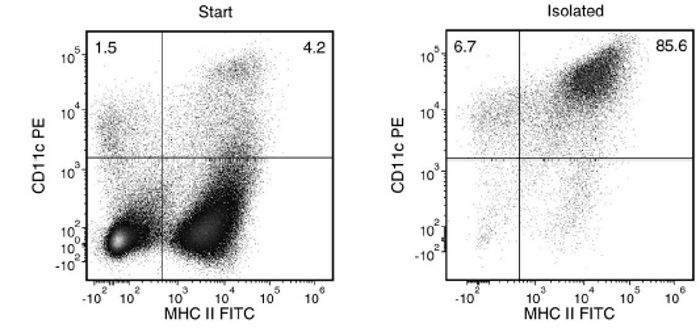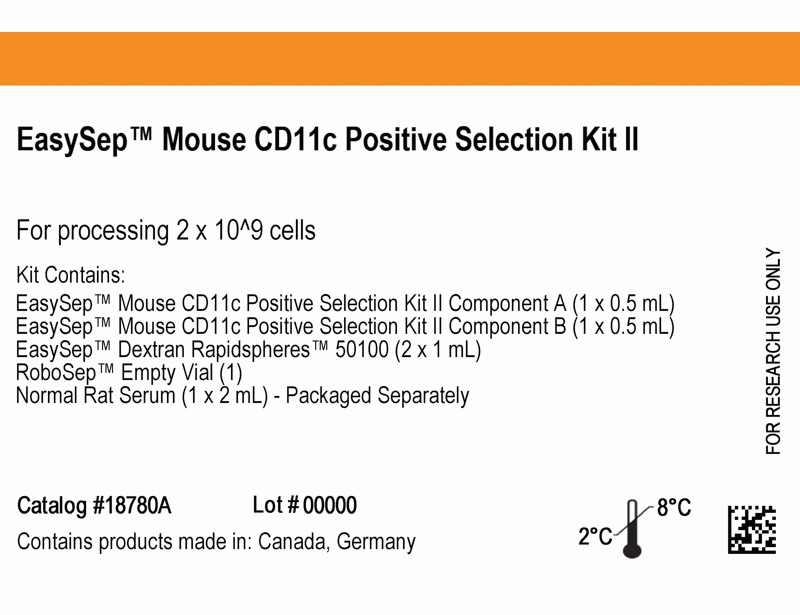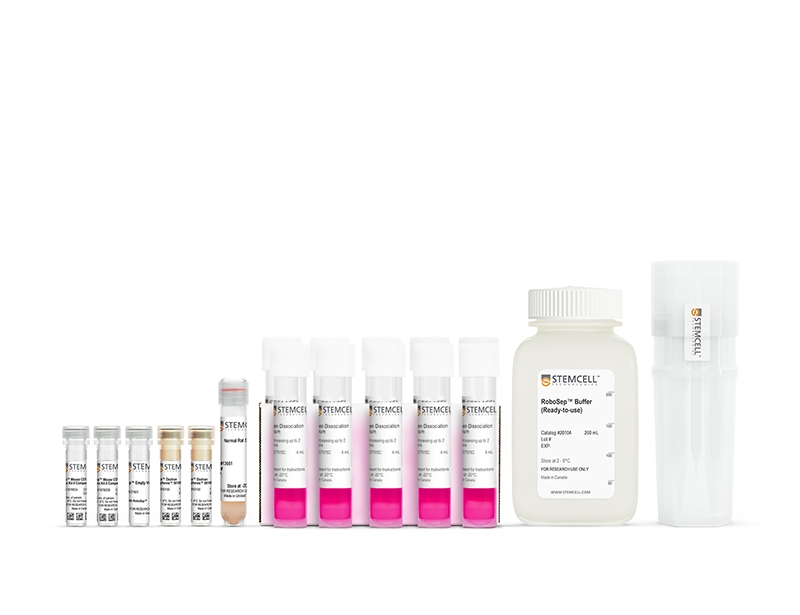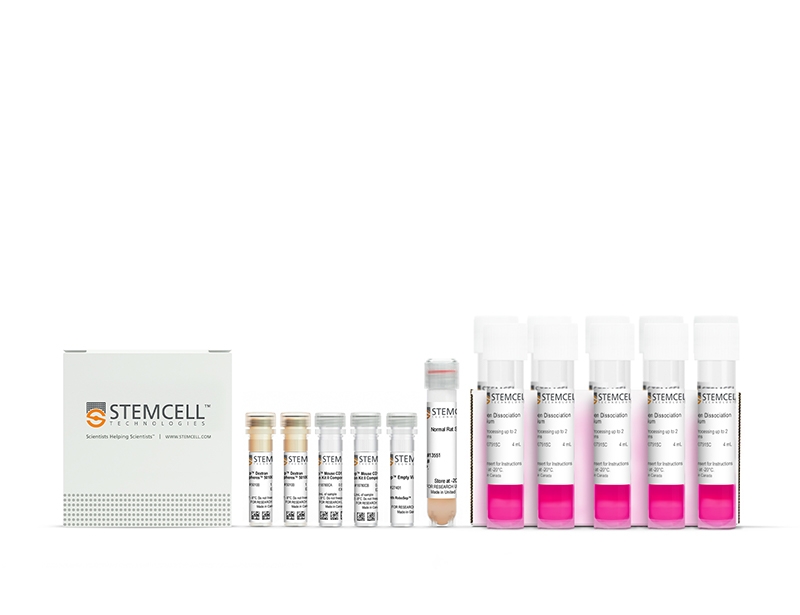概要
This product replaces the EasySep™ Mouse CD11c Positive Selection Kit (Catalog #18758) for even faster cell isolations and does not result in the labeling of isolated cells with PE.
技术资料
数据及文献
Data

Figure 1. Typical EasySep™ CD11c Positive Selection Profile
Starting with mouse splenocytes, the CD11c+ cell content of the enriched fraction is typically 86.8 ± 9.7% (gated on viable singlet cells, mean ± SD using the purple EasySep™ Magnet). In the example above, the final purities of the start and isolated fraction are 5.7% and 92.3%, respectively.

 网站首页
网站首页






